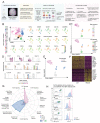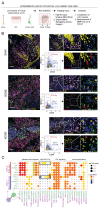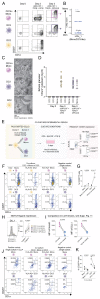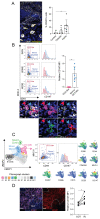Notch-dependent cooperativity between myeloid lineages promotes Langerhans cell histiocytosis pathology
- PMID: 36525505
- PMCID: PMC7614120
- DOI: 10.1126/sciimmunol.add3330
Notch-dependent cooperativity between myeloid lineages promotes Langerhans cell histiocytosis pathology
Abstract
Langerhans cell histiocytosis (LCH) is a potentially fatal neoplasm characterized by the aberrant differentiation of mononuclear phagocytes, driven by mitogen-activated protein kinase (MAPK) pathway activation. LCH cells may trigger destructive pathology yet remain in a precarious state finely balanced between apoptosis and survival, supported by a unique inflammatory milieu. The interactions that maintain this state are not well known and may offer targets for intervention. Here, we used single-cell RNA-seq and protein analysis to dissect LCH lesions, assessing LCH cell heterogeneity and comparing LCH cells with normal mononuclear phagocytes within lesions. We found LCH discriminatory signatures pointing to senescence and escape from tumor immune surveillance. We also uncovered two major lineages of LCH with DC2- and DC3/monocyte-like phenotypes and validated them in multiple pathological tissue sites by high-content imaging. Receptor-ligand analyses and lineage tracing in vitro revealed Notch-dependent cooperativity between DC2 and DC3/monocyte lineages during expression of the pathognomonic LCH program. Our results present a convergent dual origin model of LCH with MAPK pathway activation occurring before fate commitment to DC2 and DC3/monocyte lineages and Notch-dependent cooperativity between lineages driving the development of LCH cells.
Conflict of interest statement
Figures





References
-
- Kvedaraite E, Ginhoux F. Human dendritic cells in cancer. Sci Immunol. 2022;7:eabm9409. - PubMed
Publication types
MeSH terms
Grants and funding
LinkOut - more resources
Full Text Sources
Medical
Molecular Biology Databases

